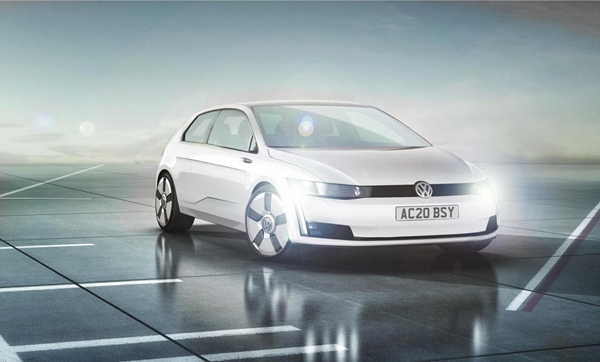
虽然现在距离下一代高尔夫发布还有五年时间,但新车的开发已经启动了。由于到2020年,欧盟对于车辆二氧化碳排放的限制更严格,因此各大车企开始探索新的方法降低大规模量产车的尾气排放水平。而大众集团内部人士近日披露了新一代高尔夫在节能环保方面的一些做法。首先是更大胆的车身气动布局,XL1优异的燃油经济性表现使新一代高尔夫的开发获益匪浅。这其中包括比现行版进一步降低车身高度,不过预计新车在外观仍具备极高的辨识性。其次,MQB平台可使入门级车型重量降至1100公斤以下。在车辆内部也将采用多项新技术,这包括:已经由沃尔沃进行测试的飞轮系统可在前驱车型中用于驱动后轮。该系统可储存浪费的能量,最多可为高尔夫提供40马力功率。惰力运转技术将在未来几年逐步应用于大众系列车型中。这包括变速器解耦以及在车辆保持一定速度巡航行驶,顺坡道下滑或减速过程中关闭引擎。电动涡轮增压器主要是令小排量引擎受益,其主要作用是在引擎低速运转时可以将更多冷空气传递到涡轮,在驾驶员踩下油门踏板的瞬间使涡轮产生全部压力。
2019 Volkswagen Golf - early details emerge
Yes, the next generation Volkswagen Golf is still 5 years away but the German automaker has development well underway. Due to the European Union CO2 emissions restrictions that are set to come into force in 2020, engineers will have to exploit every avenue the can on their high selling model. According to sources within the Volkswagen Group a few of these details can already be divulged.
The brutal aerodynamic package on the XL1 will provide the inspiration for the new VW Golf. This could result in a lower body compared to the current generation but we expect the general style that makes the model instantly recognizable to stay largely in tact.
The MQB platform will provide the base and a a kerb weight of below 1100kg is being targeted.
Beneath the skin there are a number of technologies being discussed for implementation:
Already being tested by Volvo, the Flywheel system can be used to power the rear wheels of a front-wheel-drive car. It stores waste energy and could provide the Golf with up to 40bhp.
Coasting technology is set to implemented into the Volkswagen range over the next few years. It will include transmission decoupling as well as engine shutdown while cruising at speed, traveling downhill or slowing down.
Electric turbochargers which would benefit low capacity engines the most will blow air through the turbo while the engine is slowing down. This will prepare the turbo to produce full boost as soon as the accelerator is pressed.